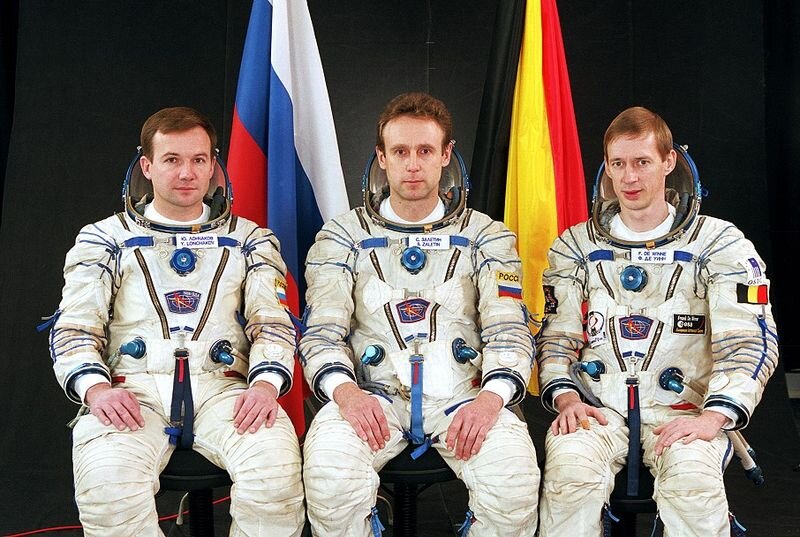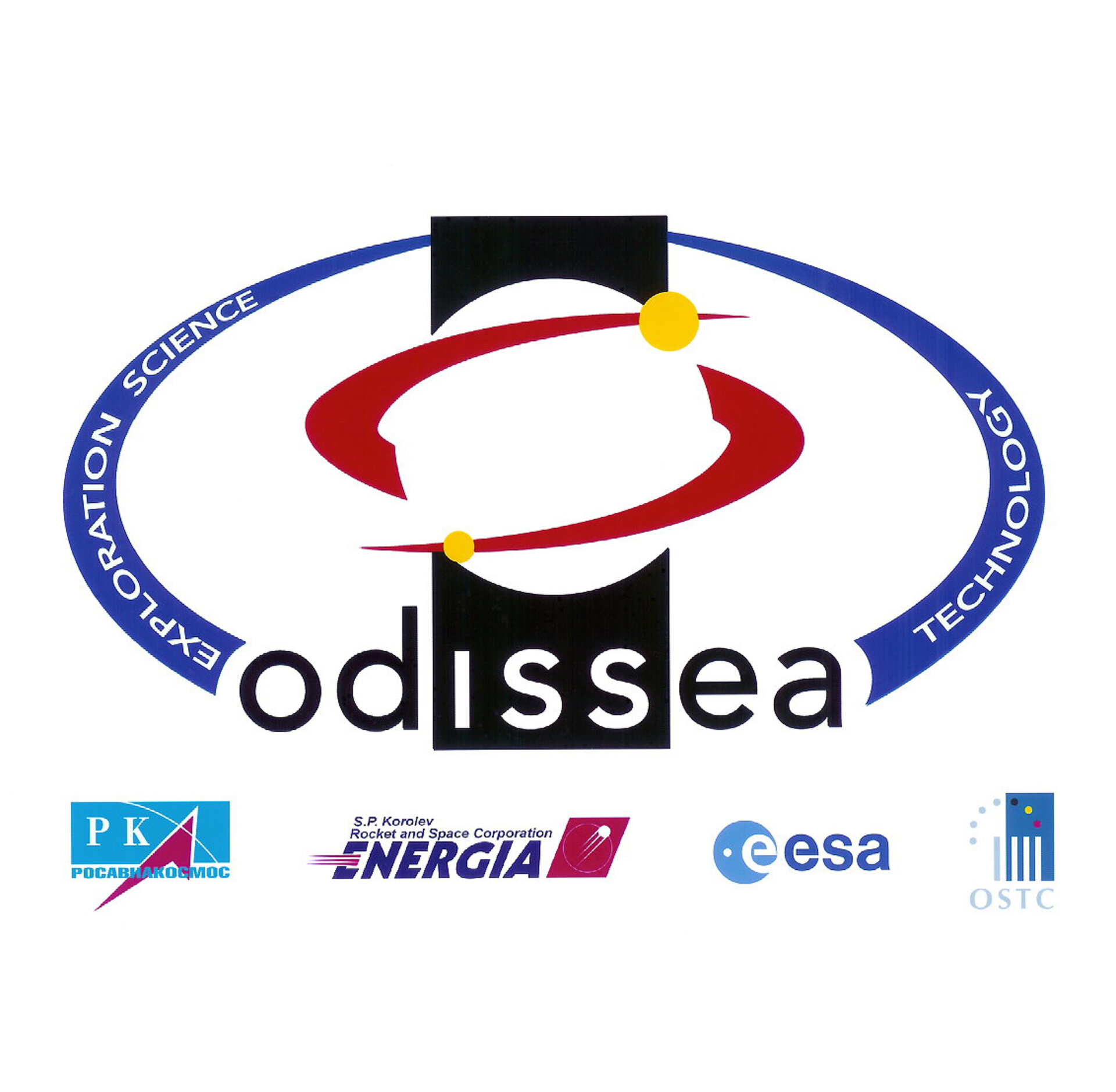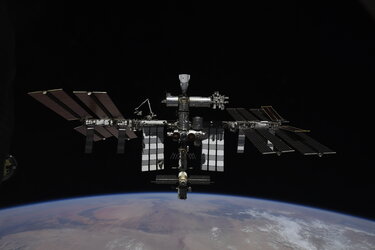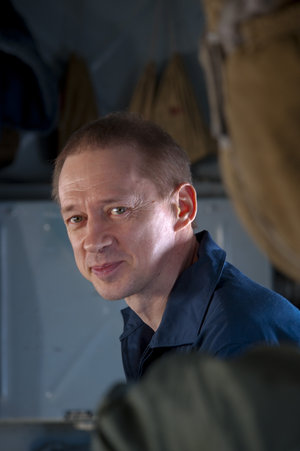Odissea
The fifth Russian Soyuz class shuttle to fly to the International Space Station. It is also the first flight of the TMA-class Soyuz spacecraft.
MISSION STATISTICS
Mission name: Soyuz TMA-1
Call sign: Yenisey
Number of crew members: 3
Launch:
30 October 2002, 03:11:11 UTC, Baikonur LC1
Landing:
4 May 2003, 02:04:25 UTC, 49.39° N; 61.2° E
Duration: 185 days, 22 hours, 53 minutes, 14 seconds
Number of orbits: ~3 020
CREW
Launched
- Sergei Zalyotin (2) - Russia
- Frank De Winne (1) - ESA Belgium
- Yuri Lonchakov (2) - Russia
Landed ISS Expedition 6 crew
- Nikolai Budarin (1) - Russia
- Kenneth Bowersox (5) - USA
- Donald Pettit (1) - USA
(1) number of spaceflights each crew member has completed, including this mission

MISSION HIGHLIGHTS
In the spring of 2001, a taxi mission to the space station was being scheduled to take place on October 2002. At first the crew was to be Commander Sergei Zalyotin and Flight Engineer Frank De Winne; however, a report released on February 2002 stated that American musician Lance Bass was interested in joining the crew for a one-week mission onboard the Russian spacecraft. The mission began to fall through, and by September 2002 they had discontinued the training of Lance Bass due to the mission organizers' failure to meet the terms of the contract. They filled the vacant seat left by Lance Bass with Russian cosmonaut Yuri Lonchakov.
A technical malfunction caused a steep and off target landing of the spacecraft after a ballistic reentry and descent. The craft landed 300 miles short of the planned area, and the crew was subjected to severe gravitational loads. Communication with the Soyuz was lost because one antenna was ripped off during descent, and two more did not deploy. The crew regained communications through an emergency transmitter after landing. Due to this event, future crews will have a satellite phone at their disposal to establish contact with recovery forces.
Odissea mission
European Space Agency (ESA) astronaut Frank De Winne, of Belgian nationality, flew to the International Space Station (ISS) in late October 2002 on board a Russian Soyuz taxi flight. He became the first Belgian to visit the ISS. During the mission, named Odissea, De Winne performed a series of science and technology related experiments on board the ISS. The Belgian Federal Office for Scientific, Technical and Cultural Affairs (OSTC) provided the funding for De Winne's flight and the related experimental programme.
A crew including Mission Commander Sergei Zalyotin, and Flight Engineers Frank De Winne and Yuri Lonchakov, lifted off on a Russian Soyuz rocket from Baikonur in Kazakhstan for an 11-day mission. The launch took place on 30 October 2002.
Alongside his Commander, De Winne, as Flight Engineer, played his part in testing the new Soyuz TMA-1 spacecraft which carried the crew to the Space Station. Two days after launch the spacecraft automatically approached and docked with the Space Station.
The prime task of the mission was to replace the TM-34 Soyuz vehicle attached to the Station with the modernised version. It is essential for the resident crew that the Soyuz 'lifeboat' remains in top condition in case of an emergency evacuation and so regular 'taxi' flights, such as Odissea, are used to swap an older Soyuz spacecraft with a newer craft every six months. This was the fourth such exchange of a Soyuz spacecraft since the assembly of the Space Station started in November 1998.
The taxi flight crew lived and worked alongside the resident Space Station crew for nine days.
While on board the Space Station, De Winne performed a large experimental programme, including work with one of the key research facilities: the Microgravity Science Glovebox (MSG), an important piece of European hardware. The MSG provides an enclosed, sealed environment in which to perform experiments on combustion, fluids and biotechnology safely under conditions of weightlessness. Designed and developed in Europe, the MSG facility was launched on board the Space Shuttle Endeavour in June 2002 and has been installed in the US laboratory Destiny.
The Odissea crew returned to Earth in the TM-34 Soyuz spacecraft that was launched to the Space Station in April 2002 by the Marco Polo taxi flight crew which included Italian ESA astronaut Roberto Vittori. The Odissea mission was Frank De Winne's first spaceflight. De Winne's maiden flight into orbit is further evidence of the strengthening cooperation between Europe and Russia. It is one of the outcomes of a framework agreement signed between ESA and Rosaviakosmos in May 2001, allowing European astronauts to fly to the ISS on Russian launchers during the period 2001 to 2006.






